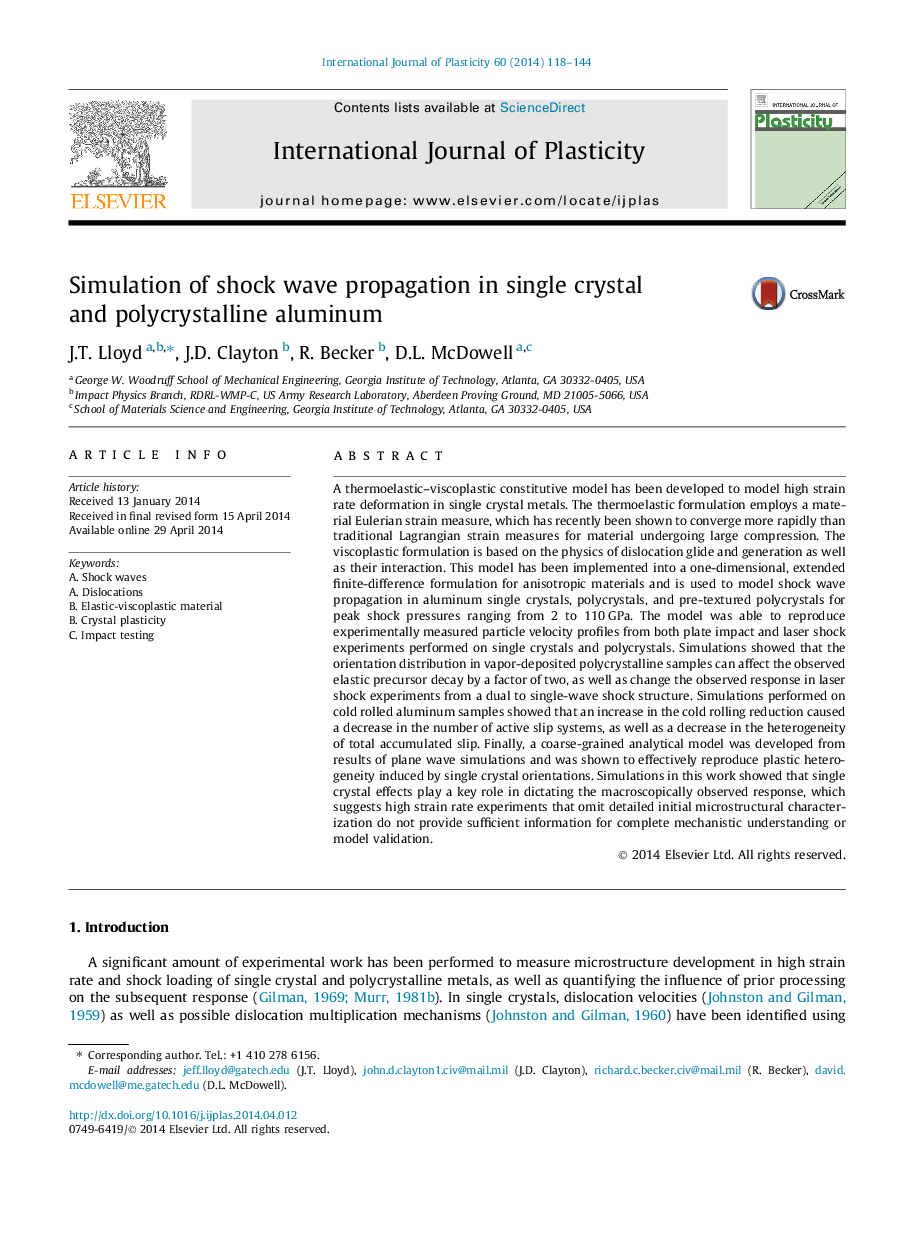| Article ID | Journal | Published Year | Pages | File Type |
|---|---|---|---|---|
| 786706 | International Journal of Plasticity | 2014 | 27 Pages |
•We create and apply a micromechanics based model to shock loading of aluminum.•We compare simulated wave profiles with experimental data from 2 to 110 GPa.•We quantify effects of polycrystallinity on the observed response.•We propose a coarse-grained model to capture the polycrystal response.•We emphasize need for microstructural characterization in experiments.
A thermoelastic–viscoplastic constitutive model has been developed to model high strain rate deformation in single crystal metals. The thermoelastic formulation employs a material Eulerian strain measure, which has recently been shown to converge more rapidly than traditional Lagrangian strain measures for material undergoing large compression. The viscoplastic formulation is based on the physics of dislocation glide and generation as well as their interaction. This model has been implemented into a one-dimensional, extended finite-difference formulation for anisotropic materials and is used to model shock wave propagation in aluminum single crystals, polycrystals, and pre-textured polycrystals for peak shock pressures ranging from 2 to 110 GPa. The model was able to reproduce experimentally measured particle velocity profiles from both plate impact and laser shock experiments performed on single crystals and polycrystals. Simulations showed that the orientation distribution in vapor-deposited polycrystalline samples can affect the observed elastic precursor decay by a factor of two, as well as change the observed response in laser shock experiments from a dual to single-wave shock structure. Simulations performed on cold rolled aluminum samples showed that an increase in the cold rolling reduction caused a decrease in the number of active slip systems, as well as a decrease in the heterogeneity of total accumulated slip. Finally, a coarse-grained analytical model was developed from results of plane wave simulations and was shown to effectively reproduce plastic heterogeneity induced by single crystal orientations. Simulations in this work showed that single crystal effects play a key role in dictating the macroscopically observed response, which suggests high strain rate experiments that omit detailed initial microstructural characterization do not provide sufficient information for complete mechanistic understanding or model validation.
